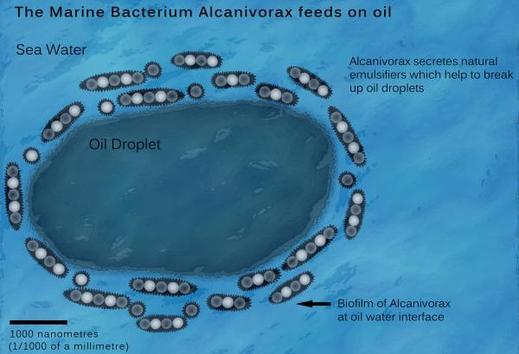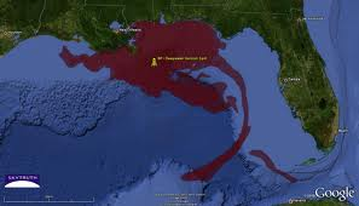|
The Problem: The BP Deepwater Horizon Oil Spill became the worst environmental disaster in U.S. history in 2010, and clean-up is still going on today. We are microbiologists, and we have been contacted by the Deepwater Horizon Task Force to assist with the continuing monumental clean-up effort. How is this still affecting us toda, and what can we do to help? Visit the National Oceanic and Atmospheric Association (NOAA) for more details! |
The Story:
NOAA says that there are many different types of oil, and the weathering process on each differs. For part of this project, we will be focusing on biodegradation, Open University professors explain biodegradation even further here. Basically, some bacteria use crude oil for “food”. The by-products of the cellular respiration are carbon dioxide and water, just like when YOU eat carbon-based foods!
According to this REPORT FROM THE AMERICAN ACADEMY OF MICROBIOLOGY entitled "Microbes and Oil Spills: FAQ", microbes can also evolve enhanced capabilities for degrading oil. One of the most rapid ways this can happen is by horizontal gene transfer (HGT), a mechanism whereby microbes can share genes with each other. With HGT, a microbe that has the genetic instructions for producing oil-degrading enzymes can transfer copies of those genes to other microbes—even microbes of different species previously incapable of degrading oil components.
NOAA says that there are many different types of oil, and the weathering process on each differs. For part of this project, we will be focusing on biodegradation, Open University professors explain biodegradation even further here. Basically, some bacteria use crude oil for “food”. The by-products of the cellular respiration are carbon dioxide and water, just like when YOU eat carbon-based foods!
According to this REPORT FROM THE AMERICAN ACADEMY OF MICROBIOLOGY entitled "Microbes and Oil Spills: FAQ", microbes can also evolve enhanced capabilities for degrading oil. One of the most rapid ways this can happen is by horizontal gene transfer (HGT), a mechanism whereby microbes can share genes with each other. With HGT, a microbe that has the genetic instructions for producing oil-degrading enzymes can transfer copies of those genes to other microbes—even microbes of different species previously incapable of degrading oil components.

We now need to understand how exactly bacteria transfer those genes naturally, and decide whether or not we want to intentionally genetically-modify large colonies of bacteria to eat oil to clean up the remains of BP’s dirty job!
Quick Lab from BiologyCorner: How do we genetically-engineer living organisms, anyway? To learn how, we are going to genetically-modify a bacterium's plasmid (circle of DNA) to produce human insulin for use by people with diabetes.
Instructions for DNA Recombination - Paper Lab
DNA Base Sequence Strips
Plasmid Base Sequence Strips
Restriction Enzyme Sequence Cards
Instructions for DNA Recombination - Paper Lab
DNA Base Sequence Strips
Plasmid Base Sequence Strips
Restriction Enzyme Sequence Cards
